Shrine of the Fox God
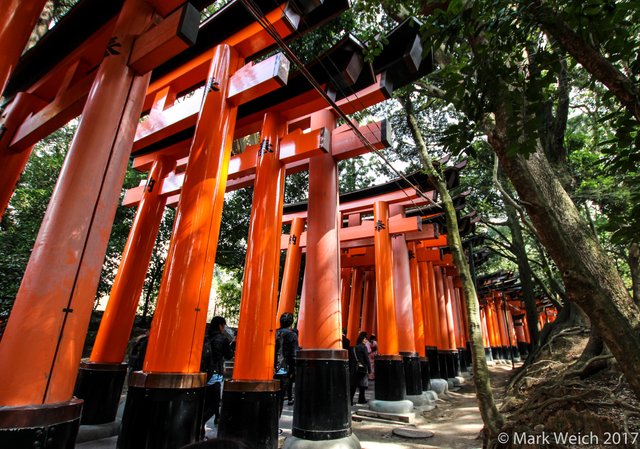
Fushimiinari Taisha, located in Kyoto Japan, is the main temple for Inari, the Shinto Fox God. Inari Okami (Okami 大神 in this case means great or powerful god) is responsible for many things: foxes, fertility, rice, tea and sake, agriculture and industry, general prosperity and worldly success! Due to the association with rice, industry and prosperity Inari is a very popular god in nearby Osaka, one of the principal business cities in Japan.
Fushimiinari is extremely popular among visitors to Japan, the foremost attraction is the tunnels formed by thousands of torii. Torii are ceremonial gates that mark the entrance to shrines in Japan, they also denote the path from the god's sanctum/residence to the main hall of that particular shrine. Often painted red/orange some are plain wood or even concrete.
While some shrines will have a short passage of these gates between the sanctum and the hall, Fushimiinari Taisha has thousands, forming long winding tunnel paths through the forest behind the main hall to the sanctum located at the top of the mountain.
The main hall and purification fountain:
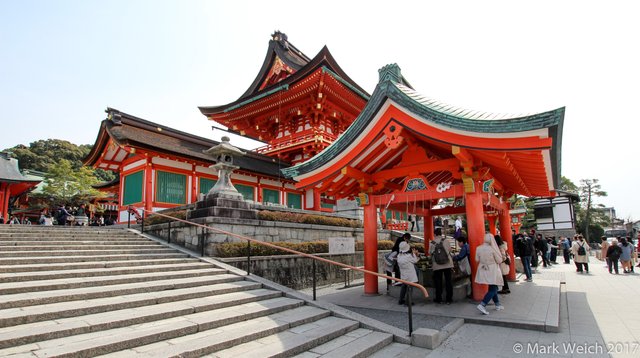
Here worshipers wash their hands, and rinse their mouths with water from a fountain, the spout is often worked into the shape of a dragon. DO NOT drink this water, it's probably safe to do so but extremely rude. However, swishing it around your mouth and spitting into the grated drain is perfectly fine and expected!
A statue of the fox god, Inari Okami holds a bushel of rice while guarding the beginning of the gated pathways.
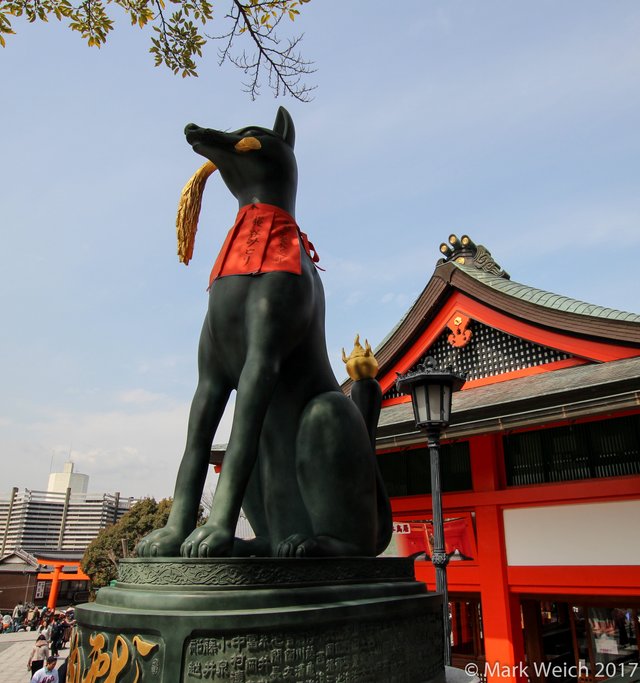
Even though I visited on a weekday, the shrine was packed with visitors. Here I let the crowd get a bit ahead in an effort to be able to photograph more of the gates.
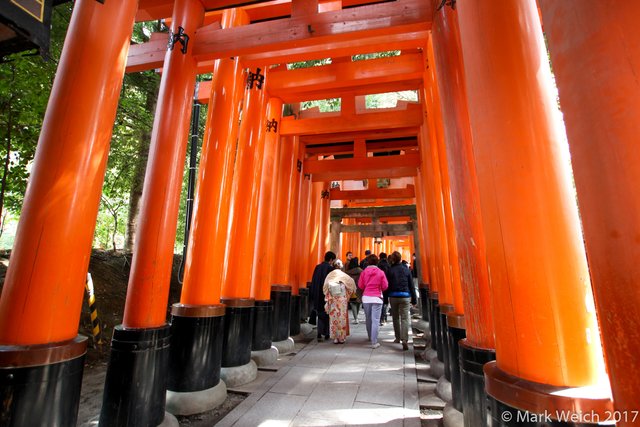
Each one of the Torii gates has been paid for by a donation, often a considerable sum, from private individuals or businesses.
One section has two parallel tunnels, conveniently one is used for going up the mountain and the other for coming back down.
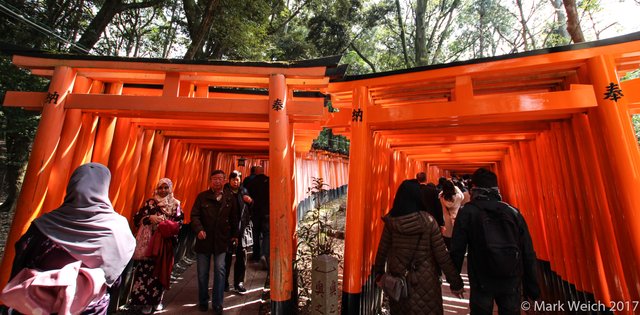
Recently Japan has seen an uptick in the numbers of tourists visiting. I thought it quite interesting how well the Hijab worn by the women on the left of the picture works with the traditional kimono of Japan.
It's also somewhat ironic that most of the people you will see at the tourist sites wearing kimono will not be Japanese, but rather tourists from other countries. The experience of wearing the kimono is often a popular addition to packaged tours of Kyoto. They help with fitting and putting the kimono on as well, also available for men too though the men's wear is not as colourful.
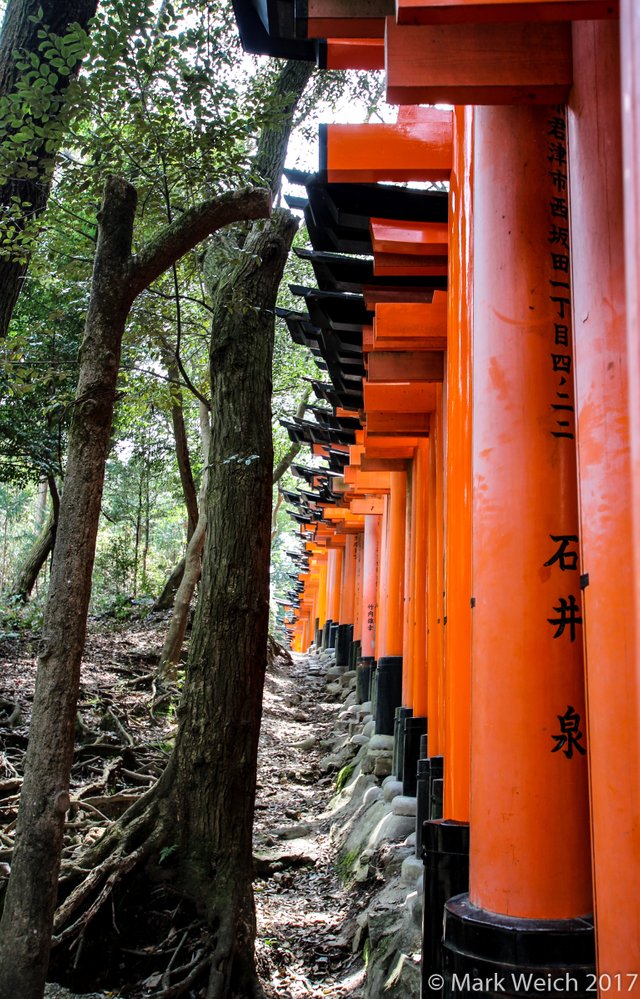
I was able to find a way to photograph the gates without people simply by stepping outside of the tunnel!
The black characters on the side of the Torii tell us the address and name of the person who donated the gate to the shrine!
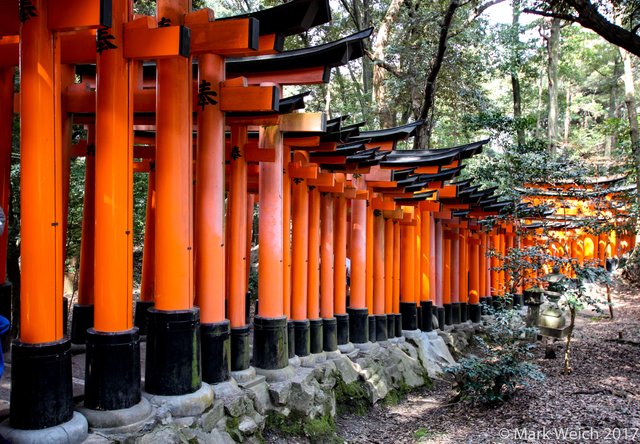
The tunnels just keep going!
While not a depiction of Inari, these lion sculptures can be seen at most shrines throughout Japan and serve as guardians.
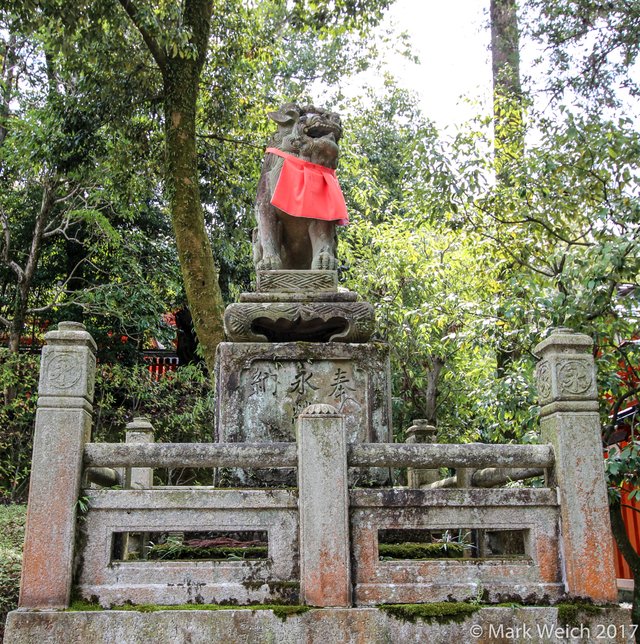
In my next post I'll be showing some of Nara Prefecture's Great Buddha, housed in the world's largest wooden building!
I primarily post things involving photography, most often of very small and in my opinion wondrous little things. Please check out my profile for more!
Vote, comment, follow, reshare! Let's keep building this community!
That's a nice place to visit. Thanks for the tour.
It really is! It's not that far from Kyoto and has a train station very close by, I highly recommend it!
Great post. Very nice pictures. I will follow.
Thank you very much! :)